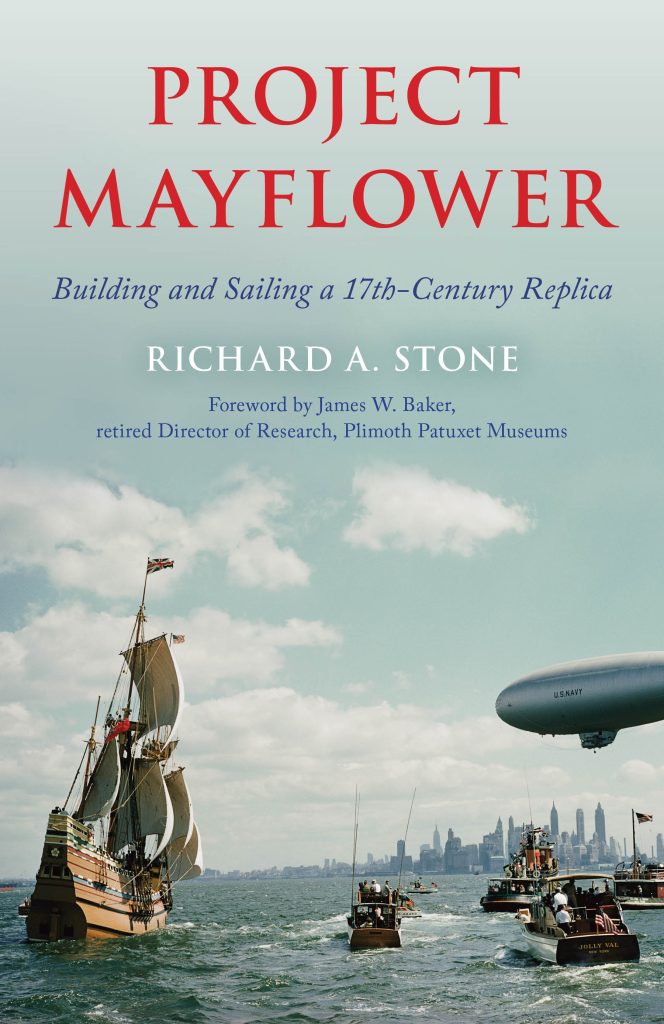On June 8, 1957, the Mayflower II was nearing the end of her transatlantic journey from England to America. Near Bermuda, she encountered a fleet of international warships, which cruised near the full-scale re-creation of the Pilgrim vessel, loudly blasting horns while sailors waved and cheered from the decks.
Four American destroyers then approached the Mayflower II, a thank-you gift to the United States from the people of Great Britain for the aid provided during World War II. The USS Ault pulled up close and sent launches over with fruit and vegetables – “by order from Washington” – along with a photographer from Life magazine.
Later that day, Mayflower II captain Alan Villiers wrote in his log about the moment, “wondering how it is that a magazine may be granted such privileges.”
Seven decades ago, only high-ranking officials in the American and British governments knew the answer to that observation: a “special relationship” between the two countries designed to heal political wounds caused by the Suez Crisis of 1956, when Great Britain, France and Israel went to war in an abortive attempt to wrest control of the Middle Eastern canal from Egypt.
A new book by Richard A. Stone digs deep into the backroom intrigue and secret deals that were brokered as the Mayflower II was being prepared to cross the Atlantic Ocean. Under the rather benign title of “Project Mayflower: Building and Sailing a 17th-Century Replica,” the author pens an engrossing narrative about how the ship became a tool in repairing the strained relationship between America and England, citing official reports discovered in U.S. State Department files and other archival sources.
“It’s the story you think you know but don’t,” Stone said during a recent visit to Plymouth. “It is so interesting. The Mayflower II was a ship that was a symbol of unity, not division.”
It also became known as “The Scheme.” During the Bermuda Conference of 1957, the ship was offered up by the British as a way of helping to mend fences broken by the failed attempt to seize the Suez Canal a year earlier, which was undertaken without U.S. knowledge or consent. The subsequent blockage of the canal by Egypt caused a major disruption in world trade and sent the English pound tumbling as part of an international financial crisis.

In Bermuda, President Dwight D. Eisenhower and Prime Minister Harold Macmillan discussed numerous issues, including how to get the “special relationship” between the two nations back on track.
“At the meeting, notes were taken by the State Department, which stamped them ‘restricted’ and threw them in the archives for 70 years, where I found them,” Stone said. “In one of the secret sessions, Eisenhower asks what can be done to fix things between them. The British foreign minister tells him they are working on something that could have some big benefits.”
Of course, it was the Mayflower II.
Initially, the British government had shown little interest in Project Mayflower, the construction of the replica ship, which was the brainchild of Warwick Charlton. Known as the “Fighting Editor,” Charlton had served as communications officer for Field Marshall Bernard Montgomery with the British Eighth Army in Egypt. This was his way of showing appreciation to America for helping England during World War II.
Now, the British government was on board with building Mayflower II and sailing it to America. It pushed hard to make it a symbol of peace and friendship between the two nations – as well as an opportunity to stimulate trade. However, it wanted the United States to pay the bulk of the cost of construction, forcing Henry Hornblower II, founder of the local museum that was then called Plimoth Plantation, the eventual beneficiary of the “gift,” to seek additional donors.
None of that mattered, though, when Mayflower II finally sailed into Plymouth Harbor on June 13, 1957. Tens of thousands of people were there to greet her, including a young teenager dressed in Pilgrim costume: James W. Baker. Later serving as director of research at what is now Plimoth Patuxet Museums, he recalled that moment in the foreword for the book. “Excited onlookers burst into jubilant cheers,” he wrote about that day.

To be sure, “Project Mayflower” is much more than a recounting of the political intrigue that played out behind the scenes nearly 70 years ago. The book covers the history of the Mayflower II from stem to stern – through its construction in England and the selection of the crew to the challenge of sailing using 17th-century technology and the captivating cast of characters that helped turn this dream into a reality.
“It’s a good story,” Stone said. “It’s a look back at where it all began and how we got here – the Mayflower II and America – and it celebrates the core values that makes democracy so precious.”
“Project Mayflower” will be published May 7 by Lyons Press and Stone is expected to return to Plymouth as part of a speaking tour.
Dave Kindy, a self-described history geek, is a longtime Plymouth resident who writes for the Washington Post, Boston Globe, National Geographic, Smithsonian and other publications. He can be reached at davidkindy1832@gmail.com.

